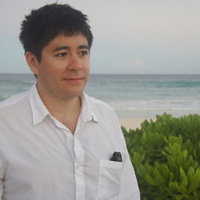Momentary Dharmas, Momentary Persons: Kuiji's窺基 Arguments for Non-Self
Ernest Billings (Billy) Brewster (Harvard University)
Abstract演講摘要:
The existence or non-existence of persons was the cardinal issue in dispute within the rationalistic tradition of Buddhist-Brāhmaṇical debate. Historically, Xuánzàng’s 玄奘(602-664Treatise Proving Consciousness-Only (* Vijñaptimātrasiddhi-śāstra; Cheng weishi lun《成唯識論》) is of considerable importance because it contains crucial early materials documenting the Buddhist-Brāhmaṇical debate up to the 7th century, an important period which is under-documented in the available Sanskrit sources. The only direct commentaries on the Cheng weishi lun by Xuanzang’s disciple, Kuījī 窺基(632-682 C.E.), are also of considerable historical interest in that they contain a wealth of material on the arguments of the Sāṅkhya (數論), Vaiśeṣika(衛世; 勝論; 吠世史迦) Jaina, and Śaiva (i.e., Paśupata 獸主and Parivrājaka 波利呾羅拘迦) interlocutors (pūrvapakṣins) represented in the Cheng weishi lun. Philosophically, Kuījī’s Recorded Explanations on the Treatise Proving Consciousness Only (Vijñaptimātra-siddhi-śāstra)《成唯識論述記》and Essentials of the Treatise Proving Consciousness-Only in the Palm of the Hand《成唯識論掌中樞要》are of particular interest in that his arguments against these views of Self are constructed in the form of formal inferences, composed of subject-locus (pakṣa), reason (hetu), and example (dṛṣṭānta). In this paper, I investigate Kuiji’s exegesis on the first section of the Cheng weishi lun in order to clarify a number of puzzling passages dealing with the diverse doctrinal theories of the rival traditions.

Edited 4 time(s). Last edit at 12/16/2014 10:35PM by CBSF Admin.